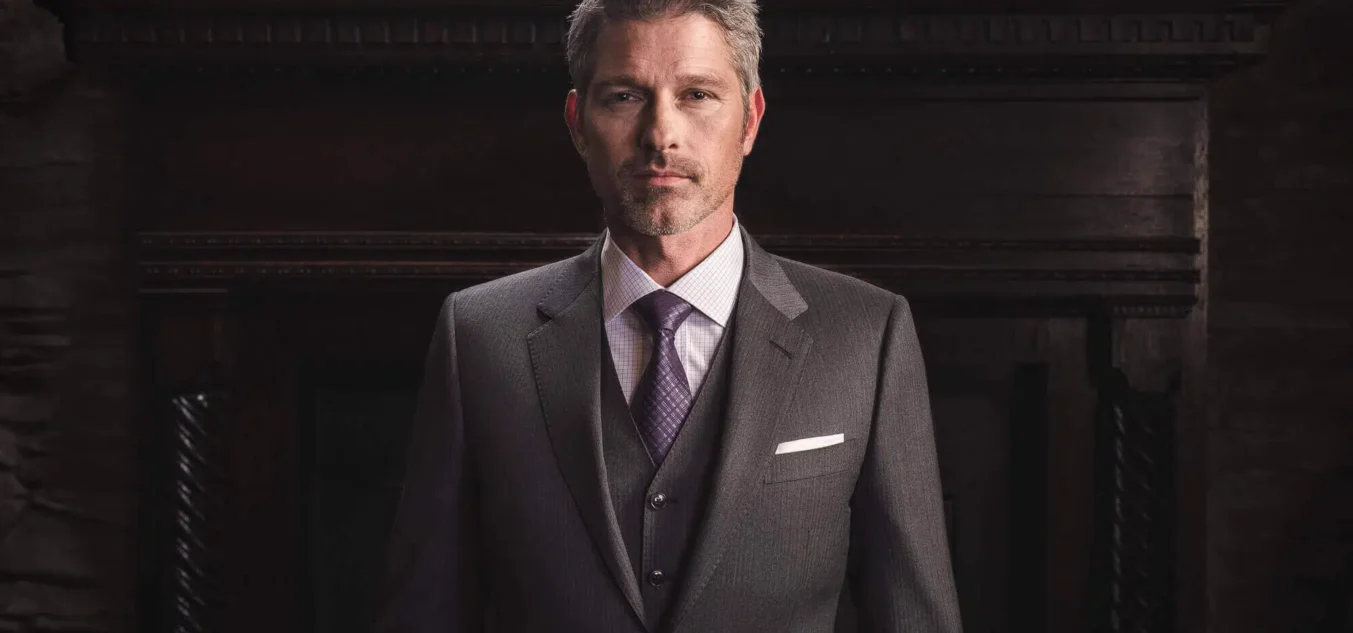In a world of made-to-measure and off-the-rack suits, owning a bespoke suit is a true luxury. The process is not only time consuming, but also expensive.
What makes a suit truly bespoke is that it is designed, patterned, and cut for a single client from scratch. This is unlike made-to-measure, which starts with an existing pattern and then modifies it to fit.
Customization
Bespoke is a process that breathes life into fabrics, creating masterpieces. This elite world of tailoring transcends the realm of made-to-measure, as bespoke designers don’t have to conform to pre-existing templates that limit creativity.
A true bespoke suit will go through multiple basted fittings, with the garment loosely stitched together with white basting thread. The tailor will use this to fine-tune the fit of the garment, ensuring that it drapes perfectly on the client’s body and accentuates their shape.
The tailor will also be able to recommend different design choices for the client that may help keep the finished suit within their budget. For example, if they want to have a shawl lapel or notch lapel they can work with the tailor to find the right fabric that will achieve their desired look while staying within their budget. This can save them money in the long run. They can then invest the savings in other alterations, fabrics and design options for their next suits.
Time
Creating a suit that is truly bespoke takes time. The process can take up to a month from the initial consultation to the final fitting. During this time, the tailor will create a new pattern for you based on your body measurements and posture images. The pattern will be used to cut the cloth for your garment, which is then stitched together by hand and added with canvassing and liner.
The term “bespoke” comes from the English expression, “to be spoken for.” It refers to the artisanship that goes into creating a custom-designed suit or coat.
Unlike made to measure suits, true bespoke is tailored from the ground up to each individual’s unique body shape. It’s a process that has been honed for centuries, particularly on Savile Row. If you have a budget in mind for your tailor to work with, they can help guide your design choices to ensure that your bespoke suit is within your price range.
Fabric
If you go with a custom tailor, they will recommend fabrics that best suit your style and budget. For example, if you want to create a suit for a special occasion, they will help you select an elegant fabric like silk or velvet. Moreover, they can suggest alternative fabrics that offer the same look but are more cost-effective.
Bespoke tailors use at least 25 body measurements and posture images to create a pattern intended just for you. You will also need to attend multiple fittings so that your tailor can make adjustments as needed. During these appointments, it is important to wear dress shoes and a fitted shirt so that your tailor can properly pin you and get the fit right.
Bespoke suits are made from cloth that is reserved exclusively for the customer and then patterned, drafted, and cut for a single client. This process is much more difficult than made-to-measure because it takes a skilled tailor to perform each step correctly.
Fit
With bespoke, your tailor is the one who cuts the fabric, does the stitchwork and everything in between. They want to build relationships with their clients and will take time to meet with them one on one. They care deeply about the work they do and will be able to recommend different options to you based on your budget.
They will be able to even out personal quirks such as an asymmetrical body shape or posture and create a flattering silhouette that makes you look your best. They will also be able to help you choose the right lapels, pockets and side tabs that will complement your personality.
Unlike made-to-measure, which utilizes an existing pattern, a bespoke suit is drafted from scratch using your measurements. This process takes several fittings to achieve a perfect fit- starting with a skeleton baste fitting and then moving on to forward and fin bar fittings. It can also take up to two or four months to complete a bespoke garment.
